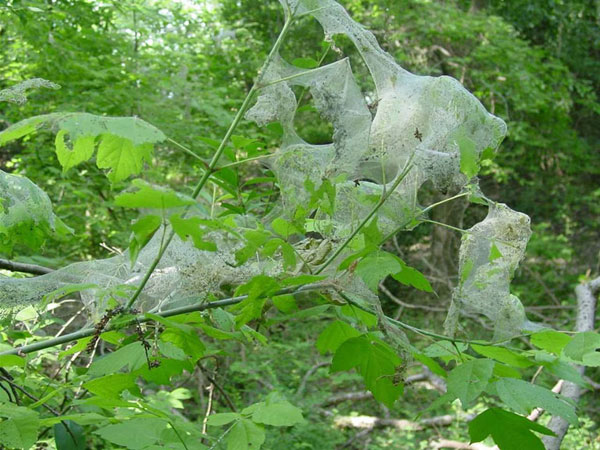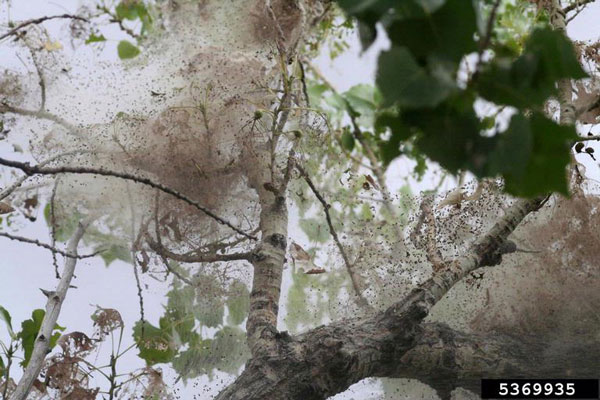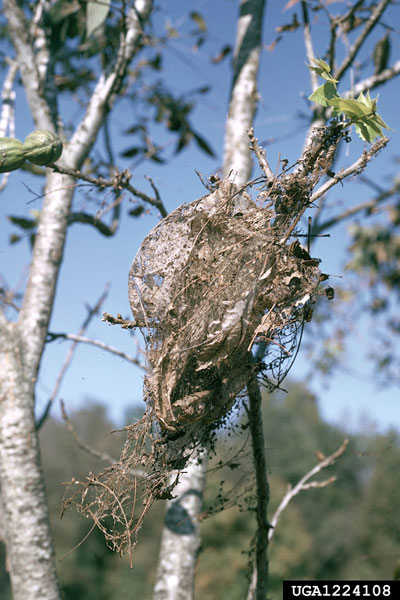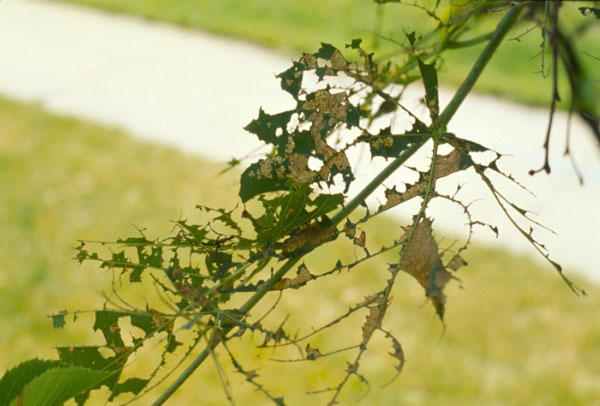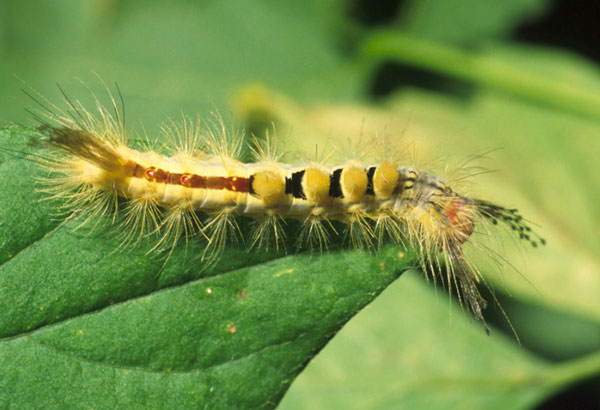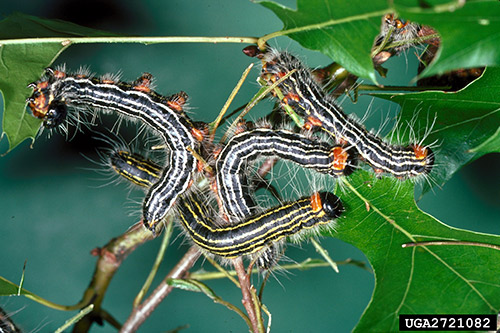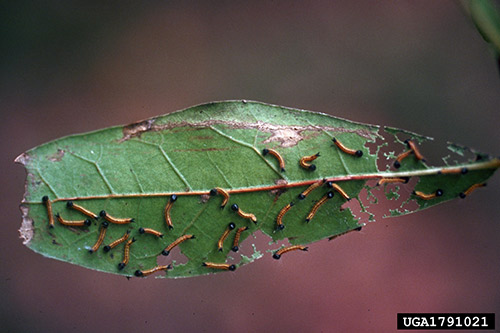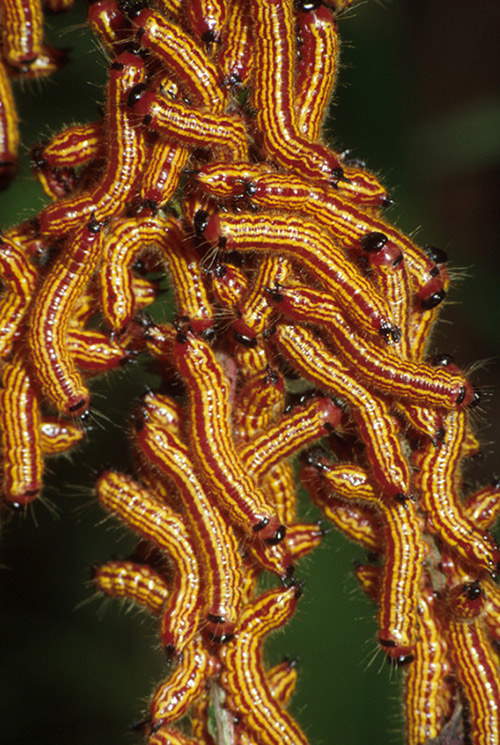How to protect your plants from sawflies
Management for sawflies depends on many factors:
- Time of year
- Health of the plant
- Conifer or deciduous tree or shrub
- Number and size of sawfly larvae
Check for sawflies in spring
Monitor plants you suspect may be attacked by sawflies. Early detection allows for more effective treatment and reduced damage to host plants.
- Use the life cycle information to predict when larvae of a particular species will be first active.
- The first appearance of larvae can vary depending on the arrival of spring weather and the part of Minnesota where the trees or shrubs are located.
- Start looking for larvae before you expect them to be first active.
Healthy plants can tolerate sawfly damage
- Keep trees and shrubs healthy; a healthy plant does not suffer as much damage from sawflies.
- Select plants that are hardy for your area and plant them in sites that encourage growth.
- Maintain plant health through proper cultural care, including watering and fertilizing.
Pick sawflies off plants
- Small numbers of sawflies can be physically removed from plants and killed by putting them into a pail of soapy water.
- You may also crush them on the plants or use a high-pressure water spray to knock them off.
Using pesticides
Treat sawfly larvae when they are young and half their full-grown size or less when pesticides are more effective. If larvae are fully grown, the damage is done and treatment is not effective.
Most sawflies feed in groups, and it is possible to spot treat them instead of treating the entire plant. This helps reduce the amount of pesticide used.
Low impact pesticides
Insecticidal soap and horticultural oil are effective when managing small numbers of young sawfly larvae.
- These products have minimal impact on natural enemies.
- Repeat applications might be needed as the product only affects sawflies it directly contacts.
Azadirachtin and spinosad are effective for one or two weeks so sawflies that feed on treated foliage are still affected.
Bacillus thuringiensis var. kurstaki (Btk) is a common low impact insecticide used against moth and butterfly caterpillars. It is specific to caterpillars and does not kill sawfly larvae.
Contact residual insecticides
Examples of contact residual pesticides that are effective include permethrin, bifenthrin, lambda cyhalothrin, and carbaryl are most effective against young sawfly larvae. One application is usually sufficient.
Systemic insecticides
Systemic insecticides are pesticides that are transported by the plant through tissues that carry food and water to the leaves and needles. When sawflies feed on the needles and leaves, they receive a toxic dose. Common examples are imidacloprid and dinotefuran.
CAUTION: Be careful when applying systemic insecticides to hardwood trees and shrubs that are attractive to bees. This includes linden, crab apple and sugar maple, as well as juneberry (serviceberry), pagoda dogwood, nannyberry viburnum and many other shrubs. This does not include evergreen trees and shrubs.
Apply systemic insecticides to trees and shrubs only after flowering has already occurred to reduce pesticide exposure to bees. If sawflies are active when trees and shrubs are flowering, use an alternative method of treating them.
Do not apply systemic soil drench pesticides when flowering plants are next to trees or shrubs.
Professional services
Commercial tree care companies have experience in managing sawflies and in applying pesticides. When treating trees is not practical, use a licensed pesticide applicator working for a professional company.
CAUTION: Mention of a pesticide or use of a pesticide label is for educational purposes only. Always follow the pesticide label directions attached to the pesticide container you are using. Remember, the label is the law.
Information source: University of Minnesota Extension




